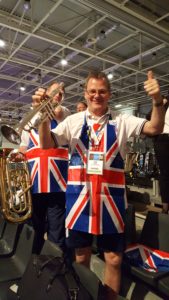The “Bocuse d’Or”:http://www.bocusedor.com/en a biennial competition, celebrating its 30th anniversary in 2017, was founded by Paul Bocuse, a French Michelin starred chef. Like the Eurovision Song Contest, it now needs three heats to select the final 24 teams to compete in Lyon next year.
“Hungary “:http://www.silvertraveladvisor.com/partner/1045ew and Budapest were hosting the European selection, with 20 countries competing over two days for places in the final.
I wondered which well-known chef would be representing the UK and discovered it was Anthony Wright, a senior chef lecturer who runs the Atrium restaurant at University College Birmingham.
Each chef, assisted by a commis, has 5 hours 35 minutes to produce a fish and meat dish. That sounded a doddle I thought, until I learned that the host nation chooses the main ingredients: sturgeon from the River Danube and saddle and haunch of a young red deer, one of Hungary’s native big game. I was told sturgeon is a difficult fish to cook due to its fatty, unusual, texture. The chef has to use 30g of its caviar and 50% of the dish has to comprise of fruit and vegetables. A mystery ingredient, given on the day, must be incorporated. It left me wondering, if the UK hosted, what would it choose: cod and beef? What do you think?
The first chef starts cooking at 8.30am with the others staggered at 10 minute intervals.
I arrived midway through day one as the dishes were being presented to the line-up of judges resplendent in their chef’s whites and tall hats: one from each country with 10 tasting the fish and 10 the meat.
I was totally unprepared for the Bocuse spectacle in terms of sound and light and, although I’d avidly read my briefing notes, it was difficult to fully appreciate what was happening. My enthusiastic cheers when Anthony presented his impressive dishes were drowned by three Union Jack clad members of that well known group, The Pukka Pies England Band, who loudly played typically rousing British tunes (think Rule Britannia and the Great Escape) on a drum, trumpet and trombone.
The following day, I arrived early and began to understand the logistics. My Press Badge gave me access to the cooking area: a line of 10 kitchens, or boxes as they’re called, with only the chef, commis and a washer-upper allowed in. A coach directs from outside the box, ensuring their chef follows an incredibly detailed list of activities and timings.
It was amazing to see the cooking skills at close quarters and it was surprising there were no enticing smells. There was incredible pressure on the chefs who, not only had to cook at a frenetic pace, but had bright camera and TV lights constantly flashing in their face. One chef had four pans on his stove and sweated profusely each time he lifted a lid. The tension on the Hungarian chef was palpable, as his box was constantly surrounded.
It was hard sometimes to work out what was happening. The Russian commis piped what looked like carrot puree onto the top of a white porcelain rectangular box. Using a palette knife the mush was pushed through what turned out to be holes in the top. I still have no idea what became of it.
At 12pm, we were ushered from the kitchen area to the 1,800 seater stand, as long tables were prepared for the judges (or Presidents as they’re known), one from each participating country. The UK president was none other than fellow Yorkshireman Brian Turner ‘from Bognor Regis’.
Each team prepares 14 plates of fish, as four Honorary Presidents taste both fish and meat. The chef displays one plate to each President in turn with many of them taking photos on their phones. The Presidents are then served by a team of specially selected cooking students who told me they undergo intensive training to carry ornately presented plates with a steady hand or expertly lift silver domes consecutively.
35 minutes later, the chef presents his meat: 10 portions on a large platter and 4 Honorary Presidential plates. Marks are awarded for presentation and as the meat was deer, many platters were adorned with antlers. The huge, heavy platters with their precious cargo, were carried along the line of judges, before the food is carved up.
The presentation of food was accompanied by loud music and flashing lights with large screens showing close ups of the dishes. The supporters went wild and, having thought the UK was well represented the first day, the second was even more spectacular with huge bands in national dress, Swiss cow bells, noisy klaxon and flags.
When all their food had been cooked and tasted, the team must simply want to put up their feet with a large glass of Hungarian wine. Instead, they have to clear and clean their box as the Kitchen Jury has up to 20 marks to award.
At the end of day two, the results were announced amid much fanfare with the home nation winning the coveted prize of €6,000 and the gold medal with the UK failing to qualify. Interestingly, in the history of the competition, the UK has never won (our best result was 4th in 2013) with the Scandinavian countries of Sweden, Denmark and Norway dominating the top three places.
If you want to get a better feel for the event, watch this Youtube video:








